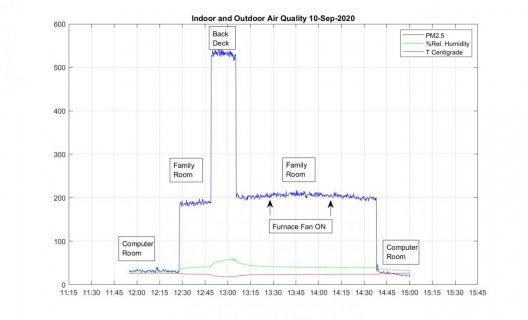Photo shows a T3.1 hooked up to a Plantower PMS5003 air quality particulate sensor https://aqicn.org/sensor/pms5003-7003/ and a small OLED display to graph the reading vs time. I had it inside, took it outside briefly and then back inside. When I first tested it a few months ago, the reading was about 3 to 5 units in the PM2.5 bin (it also has other size ranges).
With the current fires near Portland this evening of Sept.11 it reads around 90 indoors and 380 outside. Right now I'd say it smells like "nearby campfire". I didn't have it running yesterday when the smoke outside was far worse, like "inside a wood stove chimney". Teensy is running this code: https://github.com/jbeale1/DataAcq/blob/master/PMS5003-OLED.ino

With the current fires near Portland this evening of Sept.11 it reads around 90 indoors and 380 outside. Right now I'd say it smells like "nearby campfire". I didn't have it running yesterday when the smoke outside was far worse, like "inside a wood stove chimney". Teensy is running this code: https://github.com/jbeale1/DataAcq/blob/master/PMS5003-OLED.ino

Last edited:





